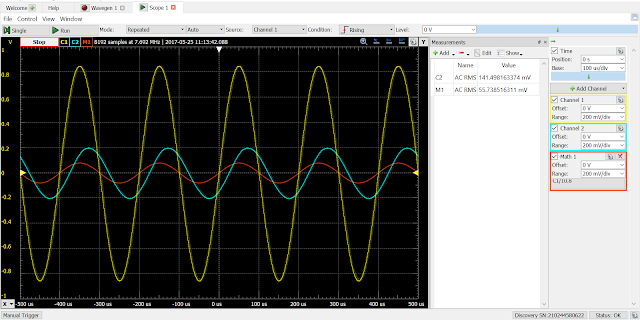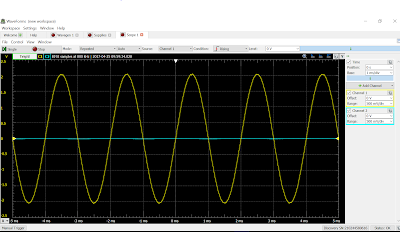Introduction: In this lab, we built a frequency filter using RL series circuit. We did not know what kind of filter this is at the start, but we were to find it out later using calculation and measurement.
 |
| Voltage of Resistor at 15915 Hz |
 |
Voltage of Resistor at 159150 Hz
|
 |
| Voltage across Inductor at 159150 Hz |
We measured voltage across resistor and inductor at tenth, eighth, fourth, second, itself, twice, four times, eight times, and ten times of corner frequency, that is 1591, 1989, 3978, 7957, 15915, 31830, 63660, 127320, 159150 Hz. The result is as below,
 |
| Voltage transform value means voltage gain. |
 |
| We did not measure value for 31830 Hz. |
We plotted Voltage gain vs. Frequency.
Conclusion: Clearly Gain of resistor can be used as low-frequency filter and gain of inductor can be used as high-frequency filter. the gain of resistor and inductor have summing relationship. their gain together is 1. It is because the voltage across inductor and resistor together is input voltage. If gain of Resistor is 0.7, then gain of the inductor is 0.3.













































